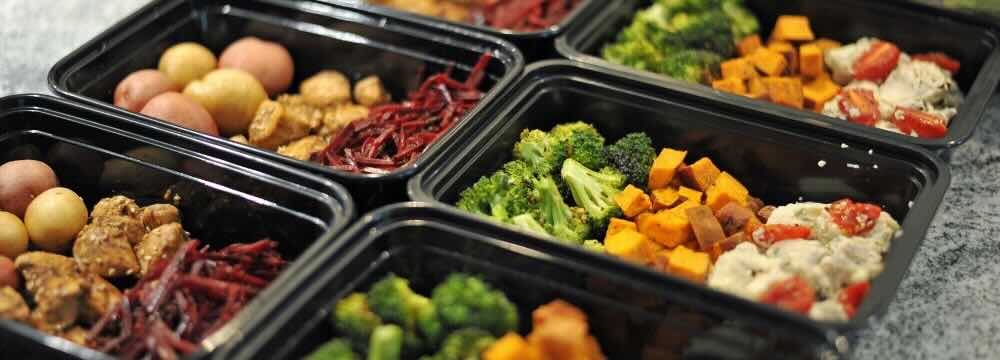
Meal prep subscription services have exploded in popularity over the past decade. From giants like HelloFresh and Blue Apron to niche options like Factor, BariBox, and Mighty Meals, these companies promise to make cooking simpler, healthier, and more interesting. Instead of writing grocery lists or scrolling endlessly through Pinterest recipes, you can get a box of pre-portioned ingredients or fully prepared meals delivered straight to your door.
The appeal is easy to understand: fewer grocery runs, less guesswork, and dinner on the table without staring blankly into the fridge.
But are they actually worth it, especially for patients before and after bariatric surgery?
Opinions are divided. Scroll through Reddit, and you’ll see everything from glowing reviews about newfound convenience to sharp criticism of waste and expense. Defending whether they’re “good” or “bad” is nuanced. These subscriptions fill a specific role – and whether they’re a good fit depends on your lifestyle, budget, and cooking habits.
To help you decide, we’ll look at the advantages, the drawbacks, and some hidden factors that don’t always make it into Reddit reviews or glossy advertisements.
The Appeal
The strongest selling point is convenience. For busy professionals, weight watchers, families, or anyone juggling multiple responsibilities and social obligations, removing the mental load of meal planning can feel like a significant relief. One reviewer put it plainly: “I work 60 hours a week. Not having to think about what to cook when I get home is worth every penny.”
Meal kits can also make cooking more accessible. Beginners often feel intimidated by grocery lists or complex recipes – someone who isn’t comfortable seasoning “to taste” can simply follow instructions. With step-by-step cards and pre-portioned ingredients, many subscribers gain confidence in the kitchen. Some even view it as a low-pressure way to expand their skills.
Another draw is variety. Services rotate menus weekly, often including global cuisines you might not try on your own. If your cooking routine has fallen into a rut of spaghetti and tacos, a Moroccan flair or Thai taste can be a refreshing change.
Many brands market themselves as health-conscious, but be sure to carefully examine the calories and ingredients to ensure they align with your dietary goals. Most companies offer a variety of plans, including calorie-smart, high-protein, and plant-based options, among others. For those managing dietary restrictions, some meal kits can simplify what otherwise feels like a stressful balancing act.
Beyond cooking kits, some services deliver fully prepared meals tailored to specific needs – keto, paleo, or even bariatric-friendly.
Potential Downside
For all the convenience, there are recurring complaints.
Meal prep subscriptions, even though they’re popular, aren’t universally loved. Cost is the biggest sticking point. At roughly $7-13 per serving, they are often more expensive than buying groceries and cooking from scratch. For larger households, that number multiplies quickly. If you want cheap but healthy food, subscriptions might not be the way to go.
Packaging is another sore spot. Shipping food across states in insulated boxes carries a carbon footprint, even if the packaging is recyclable. While companies have improved recycling programs, many meals arrive with plastic packets, insulation liners, and ice packs that may not be reusable or recyclable. Buying from local grocers or farmers’ markets may align better with eco-conscious values.
Flexibility can also be an issue. While most services allow you to skip a week, forgetting to pause a subscription can result in unwanted deliveries and charges for meals you didn’t need. Canceling altogether can sometimes be a cumbersome process; some users have reported frustration with auto-charges or surprise deliveries.
Then there’s recipe fatigue – the shine can sometimes rub off. At first, trying new dishes is exciting. However, after a few months, some subscribers report a lack of variety or repetition. While some companies offer a wide variety, others might repeat flavors or techniques (which has its appeal if you’re still getting comfortable in the kitchen).
Most people with food allergies are hyper-aware of the meals they consume; meal prep kits and pre-made dishes deserve the same level of diligence. Read the fine print, because some state they cannot guarantee meals are free from cross-contamination with allergens like wheat or peanuts. For people with strict dietary restrictions, this can be a deal-breaker.
Beyond Reviews
While reviews are a glimpse into the raw experiences of users, there are personal factors a stranger can’t capture that are worth contemplating before hitting “subscribe.”
Time savings vs. time spent. Not all kits are created equal. Some, like Blue Apron, still require chopping, sautéing, and cleanup. By itself, that can take 30 to 40 minutes. Others, like Factor, send fully prepared meals you simply reheat. Decide whether you want to save time on planning, cooking, or both, and check whether the brand matches your actual needs.
Development vs. dependency. For new cooks, meal kits can be a great crash course in cooking. However, long-term reliance may hinder your culinary growth and prevent you from learning how to balance flavors independently. If skill development is more your forte, a smart way to transition from guided cooking to independent creativity might be to collect recipe cards from the meal kits and add your own notes to them.
Portion vs satiety. Marketing often emphasizes “balanced” meals, but portion sizes may not fit your appetite. Athletes, for instance, sometimes find protein portions too small. Conversely, those seeking weight loss may appreciate the built-in portion control. Nutrition labels are worth checking if you’re tracking calories, protein, or other macros, and they can help navigate satiety expectations.
Relief vs. Angst. This is an underappreciated benefit. After a long day, not having to plan dinner can ease mental stress and reduce decision fatigue. As trivial as it sounds, this cognitive “breathing room” is a major reason some people stick with subscriptions – for some, that peace of mind justifies the cost. However, for people who genuinely enjoy meal planning and grocery shopping, relinquishing control can feel limiting. Instead of reducing stress, pre-planned meals might add pressure by boxing in their creativity or disrupting routines they already find rewarding.
So, who stands to benefit the most from meal prep subscriptions? They tend to work best for:
- Busy professionals who value convenience over cost.
- New cooks who struggle with creativity in the kitchen but can follow a recipe.
- Diet-focused eaters who want pre-portioned meals delivered.
- Small households (one to two people) where portion sizes match well.
On the other hand, they can be less ideal for.
- Experienced home cooks who already enjoy experimenting with recipes and ingredients.
- Individuals with strict allergies due to cross-contamination risks.
- Large families where per-serving costs quickly outweigh the benefits.
- People with unpredictable schedules may waste meals if plans change suddenly.
The Real Math
Let’s talk money. On average, meal kit subscriptions can run about $7-13 per serving, depending on the meal plan you’re subscribed to. Compare this with:
- Grocery shopping: Roughly $2-6 per serving when cooking at home, depending on dietary choices and geographic location
- Restaurants and takeout: Usually $15-20 (or more!) per serving
That puts meal kits squarely in the middle ground – pricier than groceries but cheaper than eating out.
There are also “hidden” factors. Subscriptions could reduce food waste because portions are pre-measured, thereby potentially reducing your grocery bill if you notice a tendency to buy things you’ll never eat. They could also curb impulse grocery buys (like snacks or extra drinks), which can add up. On the other hand, there may be indirect added costs. Some complain that the serving sizes leave them hungry, leading to the purchase of extra snacks anyway.
Even when you factor in small nuances, meal kits will likely cost more than groceries when compared. However, if you tend to eat out frequently and compare the costs to your takeout budget, you’ll often save money.
Final Verdict
Meal prep subscriptions do fill a niche – just not for everyone. They can be a bridge for beginners learning to cook, a sanity saver for parents, or a portion-control tool for those managing health goals. But they are also expensive, sometimes wasteful, and unnecessary for confident home cooks.
The best advice? Try it for a month – most companies offer discounts for first-time users. Test a subscription for a few weeks, track your spending, and notice whether it genuinely makes life easier. If it reduces stress, helps you eat better, and fits your budget, then yes – it’s worth it. If not, you’ll at least walk away with a few new recipes and the realization that your local grocery store has everything you need.
For some, you’re paying for the experience, and that might be fulfilling. For others, a trip to the local grocery store or farmer’s market might be more gratifying. In the end, they’re worth it if they’re worth it to you.
If you’ve been experimenting with meal prep subscriptions to eat healthier, manage weight, or control portions but feel like you need more structured guidance, that may be a sign it’s time for professional support. At VIPSurg, our team specializes in personalized dietary counseling before and after bariatric surgery to help you achieve lasting results.









